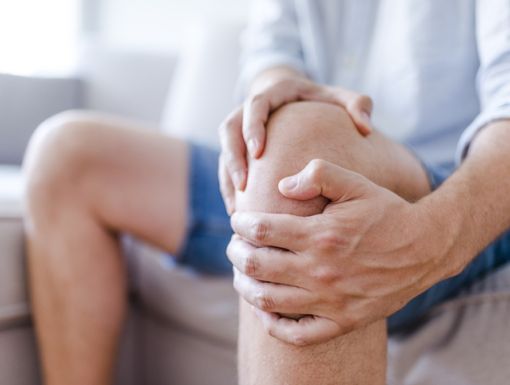
Pain Behind the Kneecap
Do you feel sudden or consistent bursts of pain behind your kneecap? One of the most common knee conditions, known as patellofemoral syndrome, causes pain behind the kneecap and in the front of the knee.
What is patellofemoral pain syndrome?
Patellofemoral pain syndrome is a general medical term used when pain occurs at the front of the knee and around the kneecap without any sign of damage or other problems. Symptoms may include:
- Pain behind or around the kneecap or at the front of the knee. Often the pain cannot be pinpointed and is instead felt vaguely at the front of the knee.
- The pain comes and goes.
- Both knees are often affected at the same time, with one knee being worse.
- The pain is worse when going up or down stairs.
- Running, squatting and certain sports trigger the pain.
- The pain may be felt by sitting still for long periods of time.
- Puffiness or swelling around the kneecap.
If you have patellofemoral pain, visit your doctor. The diagnosis is made based on your symptoms, the history of the problem and an examination of your knee.
What causes patellofemoral pain?
There are different factors for patellofemoral pain. It is likely that the cause is not the same in everyone that is affected. The different factors occur when the pressure between the kneecap and lower part of the thighbone increases. This may happen during running, cycling, squatting or going up and down stairs. Situations where this can occur include:
- Overuse of the knee, such as in certain sports.
- Cycling where the saddle is too low or too far forward.
- If the alignment of the kneecap where it moves over the lower femur is off, the kneecap may rub on rather than glide over the lower femur. This is known as maltracking. It may be due to the way the knee has developed or to an imbalance in the muscles around the knee.
- Weak hip muscles.
- Foot problems may play a role.
- Injury to the knee.
A combination of alignment problems and overuse in sports is one of the most common reasons for having patellofemoral pain.
Treatment for Patellofemoral Pain
There are several short-term options to treat patellofemoral pain.
- Avoiding strenuous use of the knees until the pain subsides.
- Anti-inflammatory painkillers such as ibuprofen.
- Physiotherapy, including strengthening the muscles are the knee and alignment exercises.
- Taping of the kneecap to reduce pain without long-term benefits.
For long-term options:
- A long-term physiotherapy program.
- Suitable footwear for running and if you have flat feet.
Surgery is no longer recommended as first-line treatment for patellofemoral syndrome. Most people do well, if not better, with non-surgical treatment.
At Ochsner Health Center – Kenner, our nationally recognized opioid free surgery program ensures a rapid recovery with the average needing approximately six weeks of physical therapy. Most patients can walk without any assistive devices like a cane in less than two weeks. Many patients can drive in two weeks after surgery so long as they are not taking narcotics. Because we can minimize the pain before, during, and after surgery the recovery time for a knee replacement is far less than it has been in the past.



